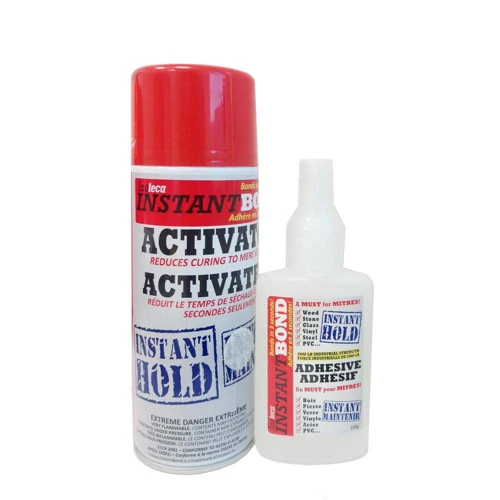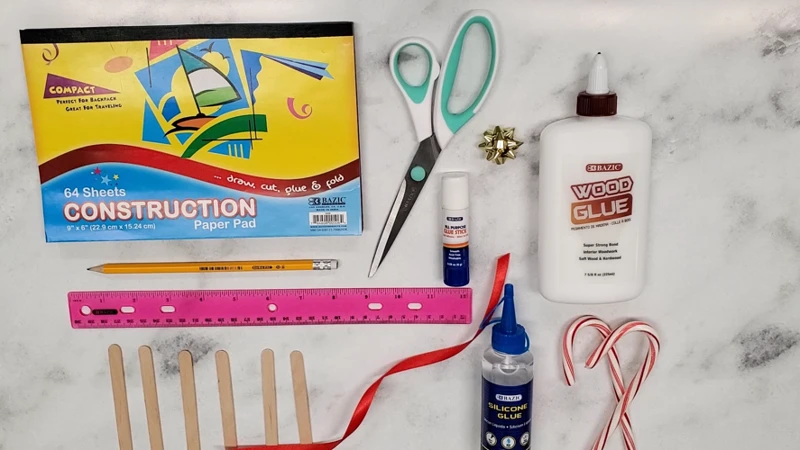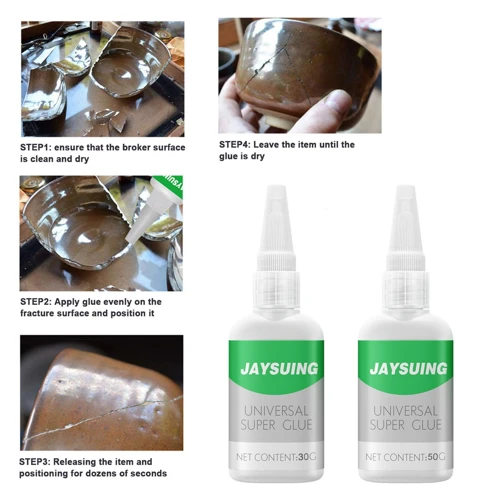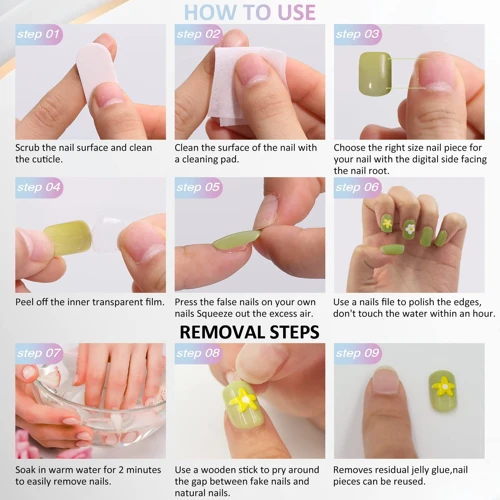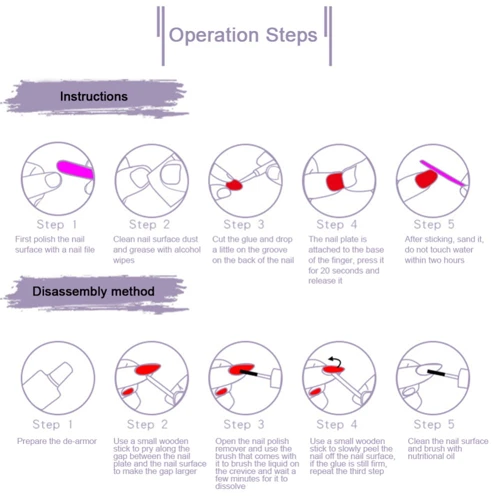If you’ve ever found yourself frustrated with a stubborn glob of glue stuck to your countertop, you’re not alone. The sticky, messy residue can be a nuisance to remove. But fear not! With a few simple steps and some household supplies, you can bid adieu to glue stains on your countertops for good. In this article, we’ll provide detailed instructions and tips on how to get glue off countertop, regardless of the type of glue you’re dealing with. Whether it’s adhesive residue, cyanoacrylate glue, silicone glue, or polyurethane glue, we have you covered. So, let’s get started and make those countertops sparkle again!
Step 1: Identify the Type of Glue
Identifying the type of glue that has adhered to your countertop is a crucial first step before attempting to remove it. Each type of glue requires a specific method to remove it effectively, so it’s crucial to know what you’re dealing with beforehand. Some common types of glue used on countertops include adhesive residue, cyanoacrylate glue, silicone glue, and polyurethane glue. If you’re unsure what type of glue you’re dealing with, refer to our guide on how to identify different types of glues. Once you identify the glue, you can proceed to the appropriate solution for removal. If you’re dealing with a different surface, like walls or tiles, check out our guides on how to get hot glue off the wall or how to get super glue off tiles for assistance.
Adhesive Residue
When dealing with adhesive residue on your countertop, the first step is to assess the type of glue that caused the problem. Adhesive residue is a common problem, especially in households where things tend to get a little messy during DIY projects. Different types of glue require different solutions for removal.
Here are some solutions to get rid of different types of adhesive residue:
- If the glue is water-based, try using warm water and soap to dissolve it. Apply this solution to the affected area, then use a soft-bristled brush or cloth to rub the residue away.
- For tougher residues like hot glue or nail glue, try using rubbing alcohol or acetone. Apply either solution to the affected area, and leave it for a few minutes to let it break down the adhesive. Then, use a soft-bristled brush or cloth to rub the residue away.
- If the glue has dried and hardened, try using a plastic scraper or a putty knife to gently scrape it off.
While removing the adhesive, be careful not to damage the countertop. If the countertop is made from delicate materials, it may be best to seek professional help or advice.
Note: Always test the solution on a small, inconspicuous area of the countertop before applying it to the affected area. This will help you avoid any damage or discoloration.
By following these simple tips, you can easily remove adhesive residue from your countertop. If you need more information on removing specific types of glue, check out our article on how to get hot glue off the wall, how to get nail glue off wood, how to get gorilla glue off nails, among others.
Cyanoacrylate Glue
Cyanoacrylate glue, also known as superglue, is a fast-drying and strong adhesive that can be difficult to remove from countertops. If you have spilled cyanoacrylate glue on your countertop, don’t worry, it can be removed by following these steps:
Step 1: Protect your hands by wearing gloves. Cyanoacrylate glue can bond to skin quickly, so be careful not to touch the glue with your bare hands.
Step 2: Use a plastic putty knife or a scraper to gently scrape off as much of the glue as possible. Be careful not to scratch the surface of the countertop.
Step 3: Soak a cotton ball or a cotton swab in acetone. Acetone can dissolve cyanoacrylate glue, so it’s an effective solution for removing it. Place the soaked cotton ball or swab on the glue and let it sit for a few minutes.
Step 4: After a few minutes, gently rub the affected area with a cotton ball or a soft cloth. The glue should start to come off. If it doesn’t, repeat steps 3 and 4 until all the glue has been removed.
Step 5: Once the glue is removed, clean the area with warm soapy water to remove any traces of acetone.
It’s important to note that using hot water or scrubbing the affected area with an abrasive material can damage the surface of the countertop. It’s advisable not to use abrasive materials or hot water when removing cyanoacrylate glue from your countertop.
Removing cyanoacrylate glue from countertops can be a challenging task, but it can be done by using acetone and following the steps outlined above. To avoid this situation, it’s crucial to be careful when handling superglue. If you’re interested in learning about how to eat glue, you can check out our article on how to eat glue.
Silicone Glue
Silicone glue is a popular adhesive used for various purposes. It is often used in construction, as well as for DIY projects. The key benefit of silicone glue is that it is waterproof, making it ideal for use in damp areas or places that are exposed to water. However, if silicone glue gets on your countertop, it can be challenging to remove.
To remove silicone glue from your countertop, follow the steps below:
| Materials Needed | Method |
|---|---|
| Cotton swabs | 1. Gently scrape off any excess silicone glue from the countertop using a plastic scraper. |
| Acetone | 2. Dampen a cotton swab with acetone and apply it to the affected area. |
| Plastic scraper | 3. Leave the acetone to work for a few minutes. |
| Warm water and soap | 4. Use a plastic scraper to remove the softened silicone glue. |
| Microfiber cloth | 5. Wipe the area with warm water and soap, using a microfiber cloth to remove any residue. |
It is important to note that silicone glue may take longer to soften than other types of glue, so you may need to leave the acetone on the affected area for longer. You can also use a plastic scraper to gently push the softened glue toward the center of the area to help remove it more easily.
Important tip: Before using acetone or any other chemical solution, test it on a small, inconspicuous area of the countertop to ensure that it doesn’t cause any damage.
If you’re struggling to remove silicone glue from plastic, check out our article on how to remove glue from plastic. For removing super glue from couch, click here. Similarly, if you want to get rid of e6000 glue smell, check out this article.
Polyurethane Glue
Polyurethane glue is a popular adhesive used for various projects, but removing it from a countertop can be a daunting task. If you have spilled polyurethane glue on your countertop, do not fret. There is a solution to this problem. Here are some steps to remove polyurethane glue from your countertop:
Step 1: Allow the glue to completely dry. Unlike other types of glue, polyurethane glue does not clean easily with wet solutions. Once the glue has dried, it can be removed more efficiently.
Step 2: Use a putty knife to scrape off the dried glue. Be careful not to scratch the surface of your countertop. Gently scrape off as much dried glue as you can.
Step 3: Apply a polyurethane adhesive remover to a microfiber cloth and dab the affected area, making sure to cover the entire surface. Allow the remover to sit for a few minutes to soften the glue.
Step 4: Using a new clean microfiber cloth, scrub the area until the glue is removed. Rub with gentle, circular motions to avoid damaging the surface of the countertop. Repeat until the area is clean.
Step 5: After cleaning, rinse the countertop with water and dry with a clean cloth.
Remember, removing polyurethane glue from a countertop requires patience and care. Take your time and avoid using aggressive scrubbing techniques or abrasive materials to prevent surface damage.
If you are looking for more information on how to remove glue stains, you can check out our article on how to remove white glue or learn how to get nail glue off your skin. We also offer tips on how to get super glue off tiles.
Step 2: Gather Materials
To safely and effectively remove glue from your countertop, it’s important to gather the right materials beforehand. Here are a few items that you may need:
1. Gloves: Before you get started, put on a pair of gloves to protect your hands from any harsh chemicals or potential skin irritants in the cleaning solutions.
2. Razor blade or scraper: Depending on the type of glue, you may need to physically scrape off the residue. A razor blade or scraper tool could help you in this situation.
3. Adhesive remover solution: If adhesive residue is stubborn, you may need to use a specialized adhesive remover solution. Be sure to choose a product that is safe to use on your specific countertop material.
4. Vinegar and baking soda: If you prefer a natural cleaning method, vinegar and baking soda can be an effective alternative to harsher chemicals. Be sure to mix the two ingredients together before applying to the affected area.
5. Warm water and soap: For less stubborn glue residue, a simple solution of warm water and soap may do the trick. A mild dish soap should work just fine.
6. Acetone: For cyanoacrylate glue, acetone is often the go-to solution for removal. However, be careful when handling acetone and be sure to apply in a well-ventilated area.
By having these materials at the ready, you can tackle any type of glue residue that may be on your countertop. Just be sure to choose the appropriate solution for the type of glue you need to remove, and always take safety precautions when necessary.
Step 3: Apply Solution
Now that you have identified the type of glue residue on your countertop and gathered the necessary materials, it’s time to apply a solution. Depending on the type of glue, different solutions may be required to effectively remove it. This step is crucial in removing the glue and restoring the appearance of your countertops. With the right solution and technique, you can easily remove even the toughest of glue stains. Let’s explore some effective solutions for removing glue from your countertop.
Adhesive Remover Solution
One effective solution for removing glue from countertops is using an adhesive remover solution. This type of solution is specifically designed to break down and dissolve adhesives, making it a powerful tool in removing glue stains.
When using an adhesive remover solution, it’s important to take the necessary precautions to protect yourself and your countertop. Make sure you’re in a well-ventilated area and wear gloves and eye protection.
Here are the steps to using an adhesive remover solution to remove glue from your countertop:
| Step 1: | Apply the adhesive remover solution to the affected area. |
| Step 2: | Let the solution sit on the glue for a few minutes to allow it to break down the adhesive. |
| Step 3: | Using a plastic scraper, gently scrape away the glue. |
| Step 4: | Wipe away any residue with a clean cloth soaked in warm water and mild soap. |
| Step 5: | Rinse the area with clean water and dry with a clean towel. |
It’s important to note that different adhesive remover solutions may have different instructions and precautions, so it’s important to follow the manufacturer’s instructions carefully.
Additionally, some adhesive remover solutions may not be suitable for certain types of countertops, so it’s important to test a small, inconspicuous area first before using it on the larger stain.
Using an adhesive remover solution can be a highly effective solution for removing glue from your countertop if used correctly and with caution.
Vinegar and Baking Soda Solution
One effective solution for removing glue from countertops is a mixture of vinegar and baking soda. This solution is an excellent alternative to chemical-based cleaners and is an eco-friendly option.
To make this solution, you will need:
- White vinegar
- Baking soda
- Mixing bowl
- Spoon
- Cloth or sponge
Start by pouring a small amount of vinegar onto the glue. Then, sprinkle baking soda over the vinegar and allow it to sit for approximately 15 minutes. The vinegar and baking soda mixture will cause the glue to loosen and soften.
Next, use a cloth or sponge to scrub the glue in circular motions. Be sure to apply enough pressure to remove the glue but not so much that you damage the countertop. Once the glue is removed, rinse the countertop thoroughly with warm water and pat dry with a clean cloth.
This solution is particularly effective for removing adhesive residue from countertops. However, it may not work as well on tougher adhesives like cyanoacrylate or polyurethane glue.
It is important to note: Before trying any solution, it’s always a good idea to test a small area of the countertop first to ensure that the solution doesn’t cause any damage. Additionally, avoid using abrasive materials like steel wool or sandpaper on your countertop, as this could further damage the surface.
Warm Water and Soap Solution
One effective and easy solution for removing glue from countertops is a mixture of warm water and soap. This is a particularly useful approach for adhesive residue left behind by things like stickers or tape.
To use this method, you will need:
- Warm water
- Dish soap
- A soft cloth or sponge
Step 1: Mix a few drops of dish soap into a bowl of warm water.
Step 2: Dip the soft cloth or sponge into the soapy solution.
Step 3: Apply the solution to the affected area, making sure to saturate the glue.
Step 4: Allow the solution to sit on the glue for a few minutes.
Step 5: Use the cloth or sponge to gently scrub the glue in circular motions.
Step 6: Wipe away the soapy solution with a clean cloth or sponge.
Step 7: Repeat the process as needed until the glue is completely removed.
It is important to note that this method may not work as effectively for stronger adhesives like cyanoacrylate or silicone glue. In those cases, a specialized adhesive remover will likely be necessary.
Tips:
– Be sure to use a soft cloth or sponge to avoid damaging the countertop surface.
– Test the solution on a small, inconspicuous area of the countertop first to ensure it does not cause any damage or discoloration.
– Do not use abrasive materials such as steel wool as they can cause scratches or other damage to the countertop surface.
Acetone Solution
When it comes to removing tougher glue stains, an acetone solution can get the job done. Here’s how to use it:
Materials:
- Acetone
- Clean cloth
Step 1: Apply acetone to a clean cloth. For safety purposes, wear gloves to protect your hands from coming into direct contact with the solution.
Step 2: Dab the acetone-soaked cloth onto the affected area.
Step 3: Leave the acetone solution on the glue residue for a few minutes. This will allow the solution to dissolve the adhesive.
Step 4: After a few minutes have passed, gently scrub the area with a clean cloth in a circular motion. Be careful not to apply too much pressure, as this can damage the countertop.
Step 5: Wipe away any remaining acetone solution with a clean cloth.
Note that while acetone can effectively remove glue stains, it can also damage certain types of countertops. Be sure to test the solution on a small, inconspicuous area first to ensure it is safe to use. Additionally, acetone is a highly flammable substance, so be sure to store it away from any heat sources.
Step 4: Scrub and Wipe
Once you have let the solution sit for the recommended amount of time, it is time to start scrubbing and wiping away the glue residue. This step requires some elbow grease and patience, as you want to make sure you are removing as much of the glue as possible without damaging the countertop.
Scrubbing: Using a soft-bristled brush or a scrubbing pad, scrub the affected area in a circular motion. Start gently and gradually increase the pressure as needed. Be careful not to scrub too hard, as this can scratch or damage the countertop surface.
Wiping: After scrubbing the area, take a clean cloth or paper towel and wipe away the residue. Repeat this process until the glue is entirely removed.
Rinsing: Once you have removed all of the glue, rinse the area with warm water to remove any leftover solution or residue. Make sure to wipe the countertop dry with a clean cloth or towel.
Drying: Allow the countertop to air dry completely before using it again. If there are any lingering glue remnants or stains, you can repeat the solution application and scrubbing process until they are completely removed.
Remember always to handle your countertop with care as forceful scrubbing can damage the surface.
Step 5: Repeat if Needed
After completing the previous steps, it’s time to evaluate the effectiveness of the solution and cleaning process. If the glue residue is still visible on the countertop, repeat the process with the same solution. It’s important to be patient and persistent since certain types of glue may require multiple attempts to remove completely.
Inspect the Area: Before reapplying any cleaning solution, examine the affected area closely. Look for any changes, discoloration, or damage to the surface. If you notice any of these, stop using the solution and consult a professional.
Apply the Solution: If you decide to repeat the cleaning process, use the same solution you used earlier. Apply the solution to the remaining glue residue and let it sit for the recommended amount of time. Once again, make sure to follow the manufacturer’s instructions for the solution.
Repeat Scrubbing and Wiping: Scrub the surface with a soft-bristled brush or a clean cloth, depending on the type of material. Use gentle circular motions to avoid scratching the surface. Wipe the area clean with a damp cloth and evaluate the results.
Assess the Outcome: After repeating the cleaning process, evaluate the results once again. If there is still residue left on the countertop, try a different solution or seek professional help. However, if the residue is decreased or completely removed, move on to the final step.
Final Rinse and Dry: After all the glue residue is removed, rinse the countertop with warm water. Use a clean cloth to dry the surface before using it again. Make sure to remove all the cleaning solution to avoid damaging the surface.
Remember, patience and persistence are essential when trying to remove glue residue from a countertop. Repeat the process as many times as needed to achieve the best results.
Tips and Tricks

As you work on removing glue stains from your countertop, there are a few things to keep in mind that can make the process easier and more effective. These useful tips and tricks can help prevent future stains and ensure that your countertop stays in great condition. By following these helpful hints, you can make sure that you successfully remove glue from your countertop without causing any damage.
Prevent Future Glue Stains
Nobody wants to deal with glue stains on their countertop. Fortunately, there are preventative measures you can take to avoid the headache of removing glue from your countertop in the future. Here are some tips to help prevent future glue stains:
| Tip | Description |
| Use a Protective Covering | When working on a project that requires the use of glue, use a protective covering such as newspaper or wax paper to prevent any glue from spilling onto your countertop. |
| Clean Up Quickly | If any glue spills onto your countertop, quickly wipe it up with a damp cloth before it dries and sets in. |
| Be Careful with Glue | When using glue, be cautious and try to avoid accidentally spilling it on your countertop. |
| Choose the Right Glue | Using the right type of glue for your project can help prevent spills and make clean up easier. |
| Work in a Designated Area | Designate a specific area in your workspace for gluing projects to help contain any potential spills or messes. |
By following these tips, you can help prevent future glue stains on your countertop and save yourself the hassle of having to remove them later on. Remember to always be cautious when working with glue and to clean up any spills as soon as possible.
Test a Small Area First
Before attempting to remove glue from your countertop, it’s important to test a small, inconspicuous area first to avoid any potential damage. Here are some steps to follow for testing a small area:
- Step 1: Choose a small, hidden area on your countertop, such as in a corner or under an appliance.
- Step 2: Apply a small amount of the solution you plan to use for removing the glue onto the area.
- Step 3: Let the solution sit for a few minutes to see if it has any adverse effects, such as discoloration or damage to the surface.
- Step 4: After a few minutes, wipe away the solution and examine the area for any signs of damage. If there are no adverse effects, you can proceed with removing the glue from the rest of your countertop.
By testing a small area first, you’ll be able to assess the effectiveness of your chosen solution without risking any damage to your countertop. It’s especially important to follow this step if you’re working with an unfamiliar material or are unsure of the best course of action. Remember to always be cautious and take your time to ensure the safety of your countertop.
Do Not Use Abrasive Materials
Using abrasive materials such as steel wool or scrubbing pads can damage the surface of your countertop while attempting to remove glue stains. The use of abrasive materials can scratch the surface and remove any sealant that may be present on the countertop, making it more prone to future stains and damage.
Here are some alternative non-abrasive materials that you can use for cleaning:
- Soft cloths
- Microfiber cloths
- Paper towels
- Plastic scrapers
By using these non-abrasive materials, you can avoid causing further damage to your countertop surface while still effectively cleaning off the glue stains. It’s important to use gentle pressure and not to scrape the surface too hard, especially if you’re unsure of the type of sealant or polish that’s been applied to the countertop.
Remember, patience is key when it comes to removing tough glue stains. By using the right materials and following the correct steps, you can successfully remove the glue without causing any damage to your countertop.
Conclusion
After following the steps mentioned above, you should successfully remove the glue stain from your countertop. It is essential to identify the type of glue before proceeding with the solution, as different glues require different techniques and materials to remove them effectively.
Remember to gather all the necessary materials before starting the process. Common solutions that can be used to remove glue stains include adhesive remover solution, vinegar and baking soda solution, warm water and soap solution, and acetone solution. Be sure always to test a small area first before applying the chosen solution to the entire stain.
Avoid using abrasive materials when scrubbing the countertop to prevent any damage. Once you finish, wipe the countertop clean and repeat the process if needed.
If you wish to prevent future glue stains, avoid working with glue on or near your countertop. Instead, choose an area where spills and stains are easy to clean.
In conclusion, removing glue from your countertop requires careful attention and the correct method. While it may seem daunting, following these simple steps can help you achieve a clean and stain-free countertop in no time.
Frequently Asked Questions
Can I use a knife or scraper to remove glue from my countertop?
No, using sharp or abrasive materials may damage the countertop surface. It is best to use a non-abrasive material such as a plastic scraper or credit card to remove the glue.
Will vinegar and baking soda damage my countertop surface?
Vinegar and baking soda are safe to use on most countertop surfaces, but it is always best to test a small area first before applying to the entire glue stain.
Can I use rubbing alcohol to remove glue from my countertop?
Rubbing alcohol can be effective in removing some types of glue, but it may also damage certain countertop surfaces. It is best to check the manufacturer’s instructions or test a small area first before using rubbing alcohol.
Can I use a hair dryer to soften the glue?
Yes, using a hair dryer on a low heat setting can help soften the glue and make it easier to remove. However, be careful not to overheat or damage the countertop surface.
How long should I let the adhesive remover sit on the glue?
The recommended time may vary depending on the type of adhesive remover being used. It is important to follow the instructions on the label and avoid letting the solution sit on the countertop surface for too long to prevent damage.
What should I do if the glue stain is in a hard-to-reach area?
You can use a cotton swab or toothbrush to apply the solution in hard-to-reach areas. You may also want to consider using a toothpick to carefully loosen the glue before applying the solution.
Can olive oil or vegetable oil be used to remove glue?
No, using oil-based products may actually cause the glue to spread or make it more difficult to remove. It is best to use a solution specifically designed for removing glue.
Can I use a magic eraser to remove the glue?
A magic eraser may be effective in removing some types of glue, but it can also scratch or damage certain countertop surfaces. It is best to test a small area first or avoid using a magic eraser altogether.
Should I wear gloves when applying solution to the glue stain?
It is recommended to wear gloves when applying any cleaning solution to prevent skin irritation or chemical burns. Make sure to read the label and follow all safety precautions.
What if the glue stain is still visible after multiple attempts?
If the glue stain persists, it may be best to consult a professional or contact the manufacturer of your countertop surface for specialized cleaning instructions.
